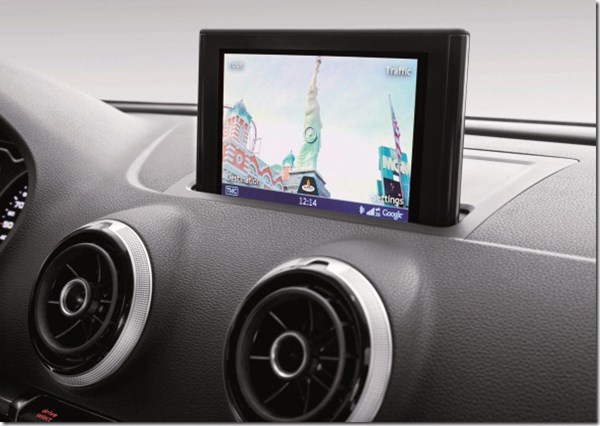Google, Audi, Hyundai, Kia and Navigation Apps
One of the things that Audi cleverly did was to integrate Google Earth into its navigation system.
One of the things that Audi cleverly did was to integrate Google Earth into its navigation system. While other OEMs are chasing their own versions of navigation interfaces (generally variants on existing themes, although Chrysler using Garmin straight-up was an excellent idea), Audi went to a trusted source. (Think only of the rare Apple debacle when it decided that its Map app was superior. . . .)

Audi navi system with Google Street View
Just as there were fast followers when it came to aping Audi’s use of LEDs, there are now clever companies that are working with Google for their navigation systems. Hyundai and Kia have both separately announced that they’re going to be using Google Maps application programming interfaces (APIs) in their telematics systems, Blue Link for Hyundai and UVO eServices for Kia.
Featured Content
Barry Ratzlaff, director of Customer Connect at Hyundai Motor America, said, “The integration of Google Maps APIs makes Blue Link even more effective. We look forward to continuing work with Google to bring innovative solutions to Hyundai owners.”
Henry Bzeih, head of the connected car program and chief technology strategist of Kia Motors America, said, “The newest iteration of the UVO platform is a breakthrough as one of the industry’s first mobile pure app-based telematics systems, and now with the Google solutions and APIs, we take the platform to yet another level of enhancement for the Kia customer. Due to the popularity and ease-of-use of Google Maps, owners can remain confident in the technology and information being delivered to them.”

Coming soon: Google-based navi for Kia
Here’s the thing: People have long talked about the foolishness of the proverbial “trying to reinvent the wheel” when it comes to developing new products. Yet for some reason, when it comes to telematics, OEMs are spending a seemingly inordinate amount of time trying to reinvent interfaces and applications, despite the fact that even the people who are working on those projects probably have an iPhone or a Samsung product in their pocket.
When asked about that, I often hear about how those iOS and Android interfaces weren’t designed for auto.
Which reminds me of the people who went on a great length talking about why it was necessary to hardwire cell phones into cars because those mobile devices just weren’t appropriate for cars. . . .
RELATED CONTENT
-
Finishing High Reliability, Function Critical Parts
From safety critical automotive and aerospace components to lifesaving medical micro-components and implantable devices, Indiana-based Electro-Spec finishes applications that require zero failure rates.
-
Thin Multilayer Palladium Coatings for Semiconductor Packaging Applications Part I: Solderability
The 1996 AES Gold Medal Award was given to I.V. Kadija and his co-workers for the Best Paper appearing in Plating and Surface Finishing in 1995. Their work dealt with the use of palladium in electronics finishing in the 1990s. This paper covered the evaluation of such finishes for solderability.
-
Investigation of Tin Whisker Formation
Immersion tin and lead-free hot air solder leveling (HASL) coatings based on SnCu or SnAgCu alloys are widely used as surface finish materials for printed circuit boards (PCB). These coatings prevent the underlying copper from corrosion and preserve its solderability during lead-free assembly processes and for a long storage life of PCBs.


.jpg;width=70;height=70;mode=crop)
















